A Visit to Robben Island
“We have forgiven them for what happened. Do you think they have forgiven us? Look around you. It’s up to you to decide”. These were the words of our guide, an ex-political prisoner who spent 12 years in Robben Island alongside the likes of Nelson Mandela, Robert Sobukwe and Jacob Zuma (South Africa’s current president). There is still anger and bitterness. But more on that further below.
Robben Island is famous for its use as a prison between 1961 and 1991. It is Cape Town’s Alcatraz. The difference is that most of the prisoners at Robben Island were political prisoners opposed to South Africa’s Apartheid regime (1948 – 1994). But even prior to that the island had a history, much of it ugly. It was first used as a prison by the Dutch in the 17th century, most of the prisoners being mutineering slaves from South Asia. In 1806 a whaling station was built on the island, then, in 1845, the island was used as both a leper colony and an insane asylum. A leper cemetery still stands there. During WWII large cannons were installed on Robben Island to defend Cape Town in the event of German attack. Then came 1961 and the period for which the island is most famous.
You can buy a ticket to Table Mountain and Robben Island here: All about the Cape Town Super Combi
.
A visit to the island is essential when visiting Cape Town. You might know the history, but everything: from the bumpy boat ride over the choppy waters of Table Bay, to the eerie flatness and desolation of the island, to the prison – sinister because it would almost look like a school if it weren’t for the wire fencing, high walls and watch towers – will bring home to you the isolation that anyone incarcerated here would have felt. Like Alcatraz they would look towards the city, seemingly close enough to touch, but in reality a 7 km swim in rough, shark-infested waters.
.
A visit to Robben Island takes 3 ½ hours and comprises of the following:
– a 30 minute catamaran ride to the island
– a 45 minute bus ride around the island. You’ll see the Lime Quarry where prisoners would work all day, the Leper cemetery, and the house where Robert Sobukwe was kept in solitary confinement. There’s a stop on the northern end of the island where you’ll see spectacular views of Cape Town in the distance. You’ll pass a permanent village on the island (for island employees and their children. There’s even a primary school) before arriving at the Maximum Security Prison.
– a tour of the prison by an ex-inmate lasting approximately 45 minutes This is the most sobering part of the tour.
– 30 minute ride back to Cape Town on the catamaran.
The easiest way to see Robben Island? This tour. They handle the booking, tickets and they’ll pick you up at your hotel.
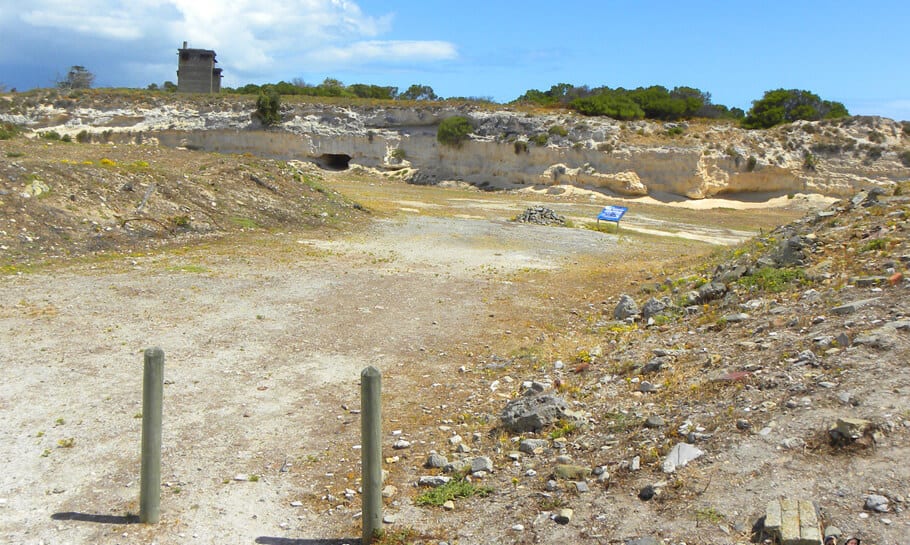
.
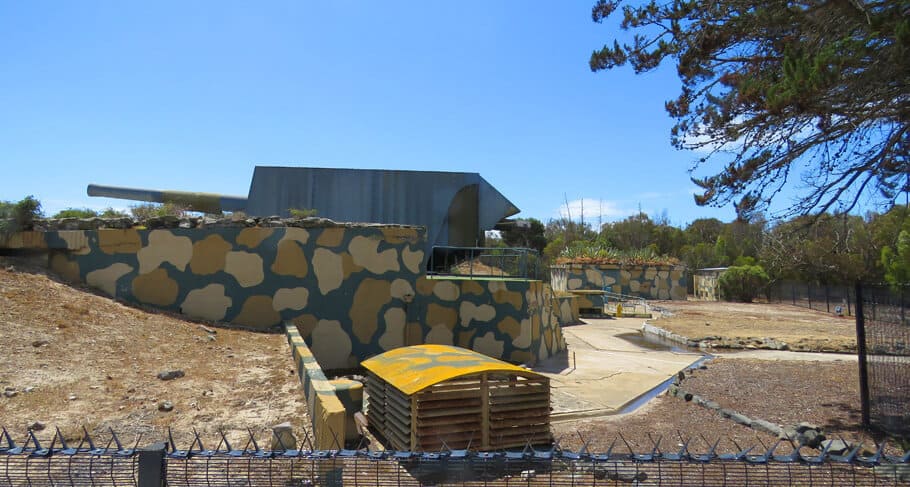
Back to how I started this post.
Our ex-inmate recounted his 12 years on the island. He remembers the day when he and other prisoners were herded into the lower deck of a ferry with no knowledge of where they were being taken. It was only when taken off that they realized they were on Robben Island. From the pier they were marched, by guards with dogs, through the front gate and to the prison.
Conditions in the prison were abysmal. Cells were tiny, they slept on thin mats and only given one blanket. Blacks had no shoes and only short pants. ‘Coloreds’ ie. non-blacks (Indians or mixed race for example) were given shoes and longer pants. Cells had buckets as toilets. There was no hot water in the prison. Like clothing, food quality depended on color: coloreds for example were given bread but not blacks (bread was considered ‘European’ food). Wake up call each morning was at 5:30 am and days were spent excavating in the lime quarry. Many ex-inmates developed cataract problems because of the whiteness of the lime. Drugs circulated in the prison and inmates, once hooked, realized that the drug caused impotence. Many were to come out of prison impotent.
.
Our ex-inmate finished his story with one message: “Don’t feel sadness or pity, leave here knowing that Robben Island is no longer a prison but a museum”.
.
After South Africa’s first democratic elections in 1994, the Truth and Reconciliation Commission (TRC) was formed to investigate human rights abuses under apartheid rule. Desmund Tutu headed the commission, which heard from both victims and aggressors. It took until 2003 for victims to get financial compensation – a onetime payment of 30,000 Rand (that’s about $2,300 USD these days).
South Africa lives under the slogan of “Rainbow Nation” (first coined by the above mentioned Tutu). That puts a glossy face on things and I’ll write about our feelings on that one day. You can’t write about South Africa without mentioning race. But if Apartheid, ex-political prisoners, and the outcome of the TRC is anything to go by, you’ll get very different (and passionate) opinions depending on which side of the fence you’re on. On the one hand you have ex-political prisoners who feel that they never got proper compensation and justice for their years of suffering. South Africa hasn’t changed enough for their liking. On the other hand, you have whites who still call Nelson Mandela (who spent 18 years at Robben Island) a terrorist. They fear that black rule will eventually transform South Africa into yet another failed African state.
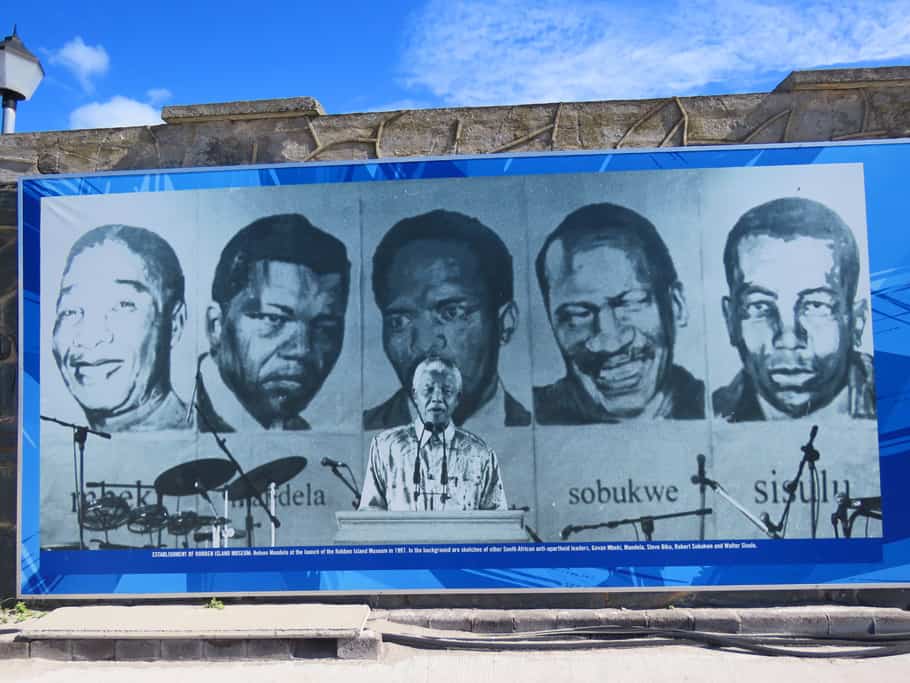
.
Practical Information
– If you want to organize a visit yourself, have a look at the official website.
– Make sure to pre-book your tickets online (using the link above). You don’t need a printed ticket – just make sure you have the serial numbers of the tickets purchased.
– You can save yourself the trouble above by booking this tour. They’ll pick you up at your hotel and you don’t have to worry about a thing.
– Catamarans leave for Robben island from the Nelson Mandela Gateway at the V&A waterfront.
– Bring a sweater because it gets cold out in the bay.
– The common practice is to tip your guides.
Related: The Incredible Colors of Bo Kaap, Cape Town
Related: What you need to know about taking the Cable car up Table Mountain
Related: From Fantastic to Not-so-Good: Experiences and Impressions over 10 days in Cape Town
Ps. If you find our blog helpful, please consider using our links to book your flights, hotels, tours, and car rentals. Have a look at our Travel Resources page.

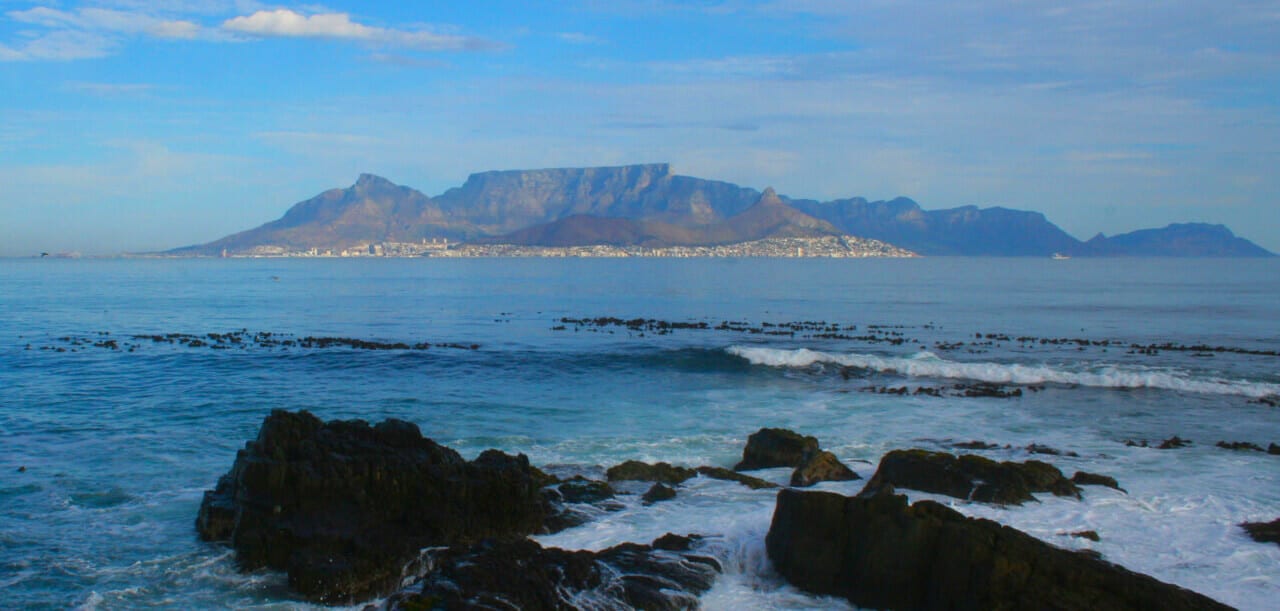
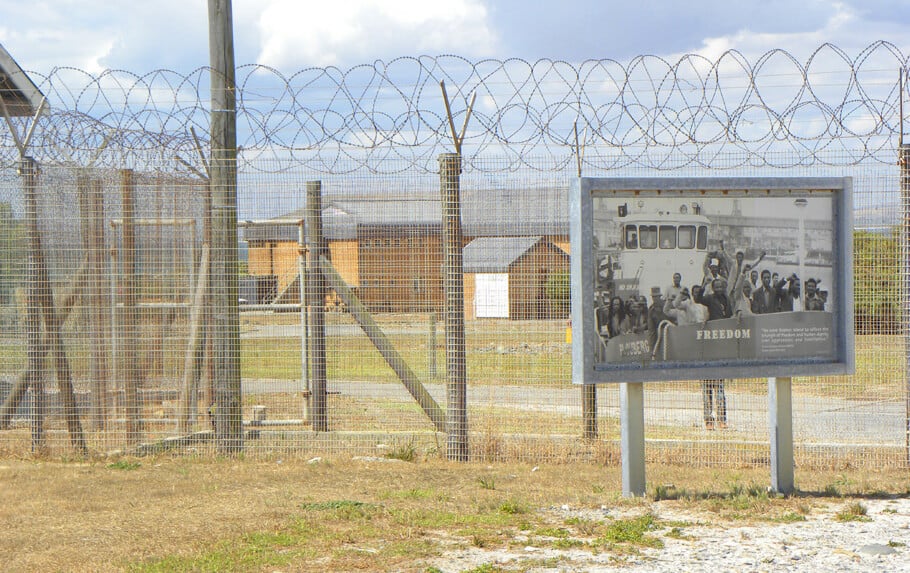



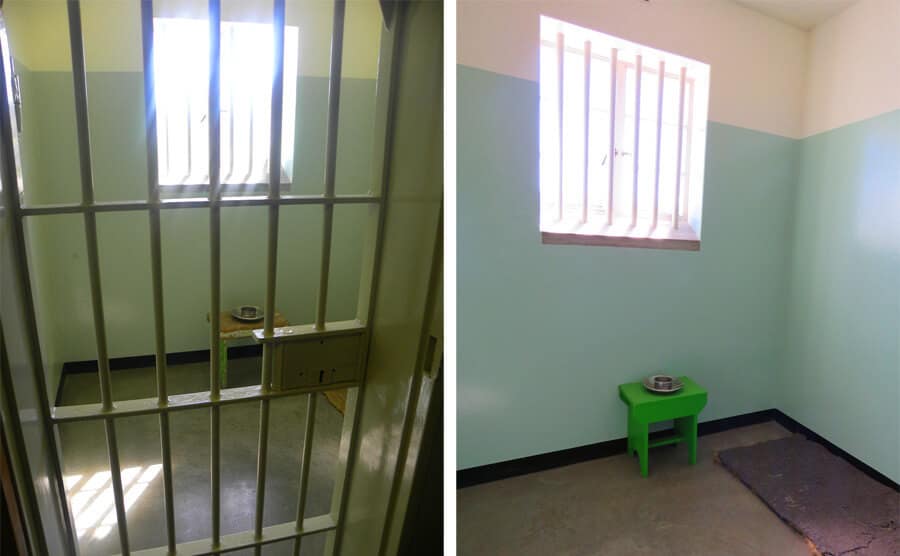
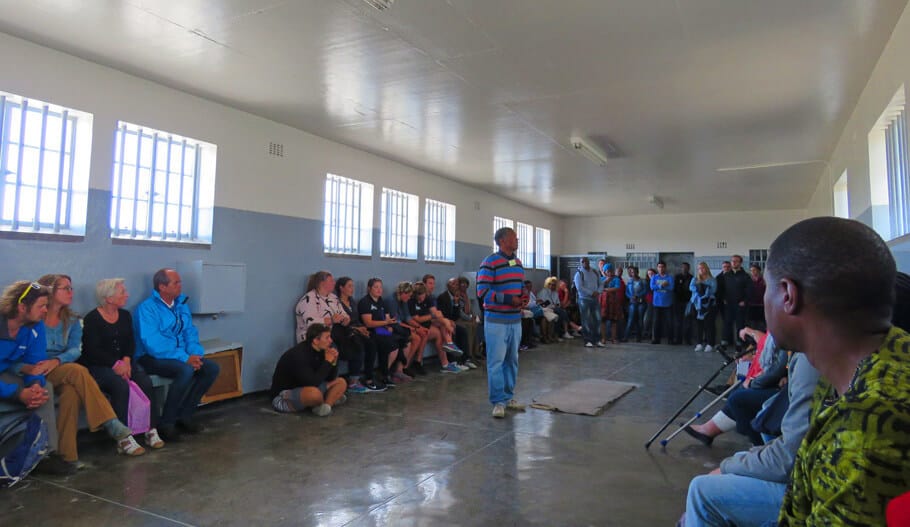
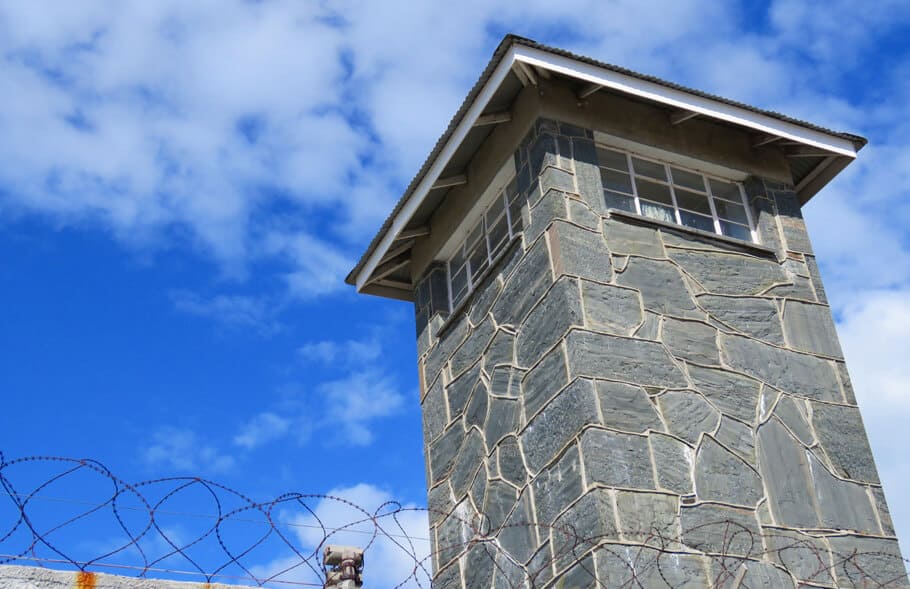
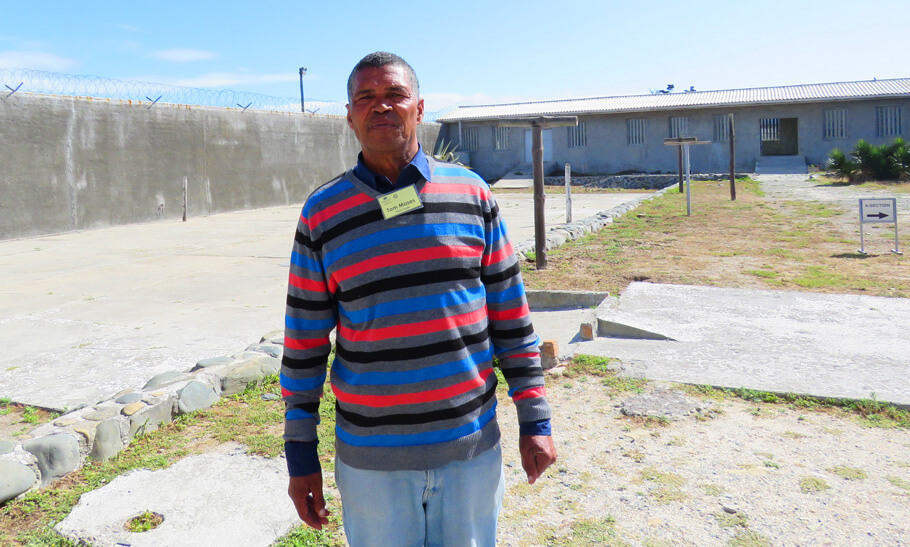



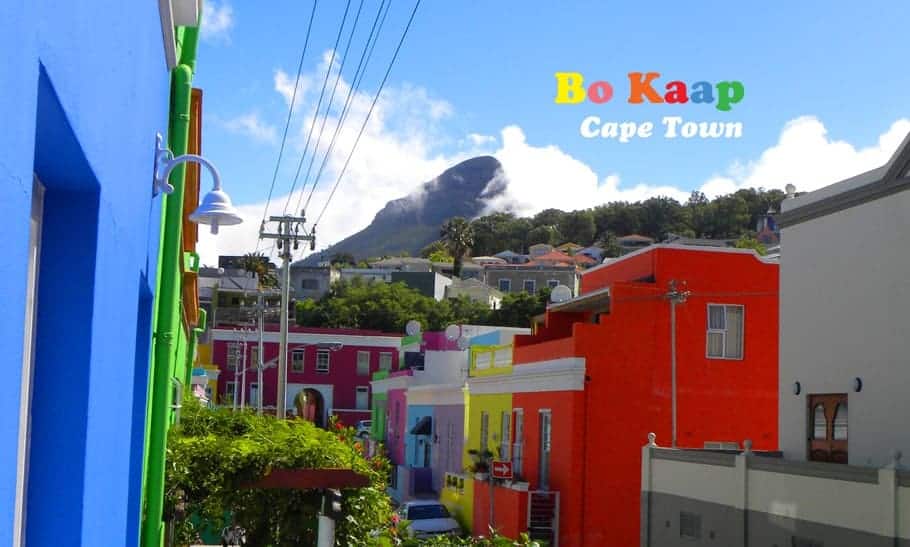
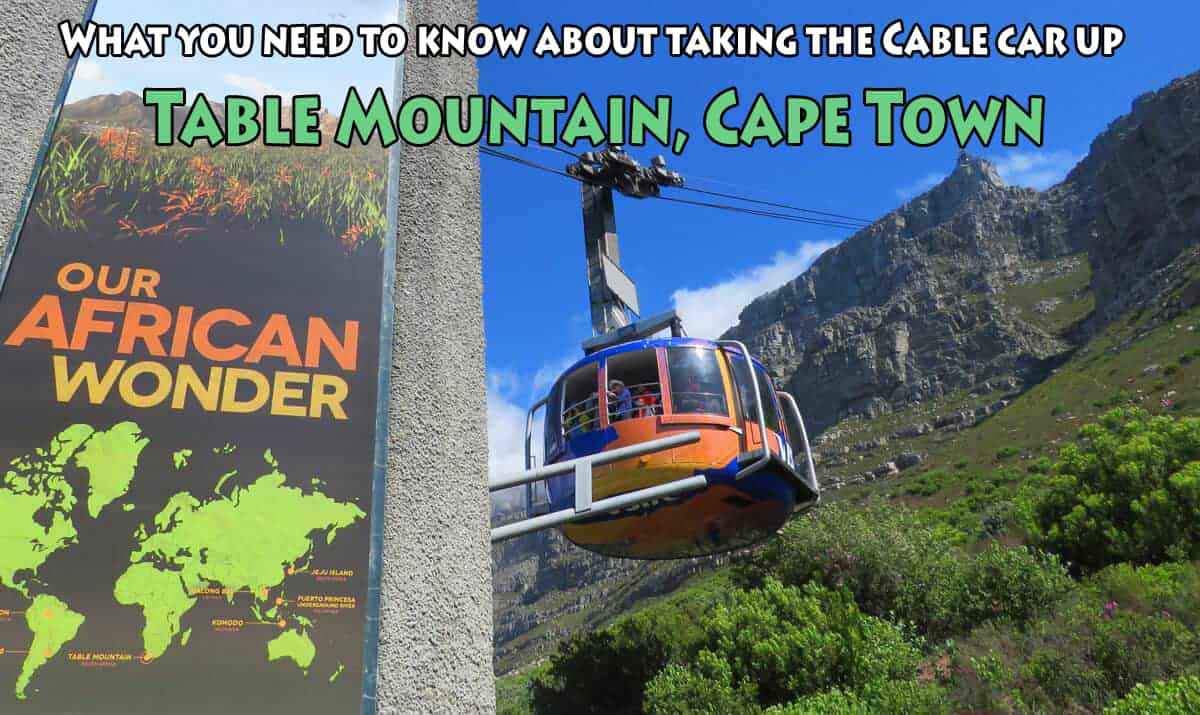
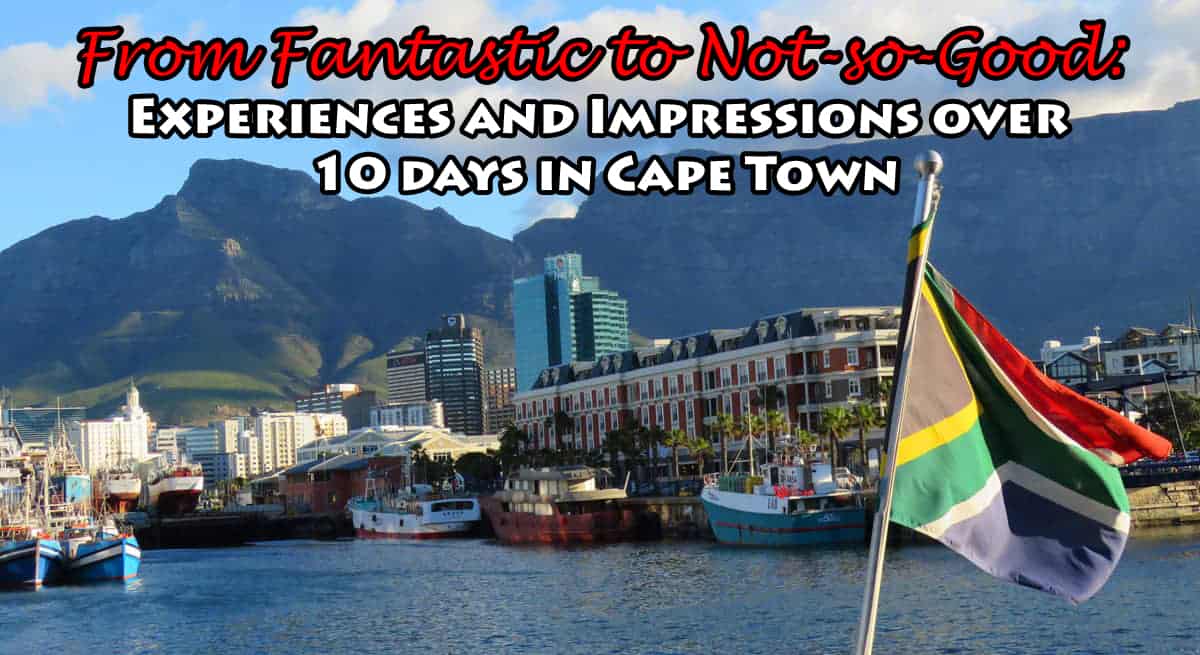
You’re right in the definition Jack.
I’ve tried to be unbiased and maybe didn’t succeed.
On the other side: you have a government at the time who didn’t allow the majority to vote, own land, and who legislated where people could live, work, and who limited their ability to move freely. It segregated people, not only in public places, but also in their private lives (marriage or sex with people of a different race were considered a criminal offense). It forcefully relocated people, it also took away the possibility of equal education by creating a separate (inferior) educational system. It imposed language restrictions outside the homelands.
I think many people would agree that, under certain conditions, people have the right to fight for their rights, especially if they are in the majority. What some would call a terrorist others would call a freedom fighter. Or maybe you can be both at the same time? Were Fidel Castro or Che terrorists or freedom fighters? Depends what side of it you’re looking from.
A couple of articles on the subject here and here.
It’s an interesting argument. What’s that quote – “history is written by the victors”. It all depends on the side of the fence you’re on.
Thanks for your input Jack.
Really interesting post! I hope to visit here someday.
That’s pretty appalling that blacks weren’t given shoes and weren’t fed the same food. And that their reparation payments were so low.
The current state of race relations is interesting. When I traveled in Turkey some years back I met some white South African nurses living in the UK who said they never wanted to live in South Africa again, saying things like “I hope all the new leaders get AIDS.” They said about the ugliest things I ever heard in my months of backpacking.
Keep up the great work and have fun on your incredible trip!
Yikes! Yeah, that is ugly. I’d really like to get a real, uncensored understanding of how both blacks and whites feel and the reasoning behind it. We’ve had people tell us different things and it’s obvious that there are some bad feelings from all parties (including the coloreds)…There’s a lot under the surface and I think it would take a long time for an outsider to actually understand it all.
A visit to Robben Island is a sombre and sobering event . It is the epitome , a powerful, terrible example of the some of the worst aspects of Apartheid. Your post is an excellent reflection of what Robben Island was, is all about . An open book, a scar on an important chapter of History – there for all to see and experience, & one of the few such places in the world. One cannot but feel outrage and sadness when one sees the extent of inhumanity of Man against Man. But Robben Island’s place in S Africa’s History, also means – like Alcatraz – it has taken on a certain mythical aura, and a lot of ‘non-saids’. Some “myths” ,’non-saids’ need to be put into context, the lesser known side to Robben Island . Yes, material comforts were minimal and inadequate, but prisoners did have coats, sweaters, blankets etc – if only because the wet, cold winters of the Cape would have been fatal otherwise… Yes, the prison was a hard-labour facility,( 2 to 3 hours a day) but Prisoners also could have gardens, many (including Mandela and most of his compatriots) had books, reading, study and political discussion ‘priviledges’ -as well as choirs, dancing, jazz and music groups etc – not exactly ‘standard’ fare for p[olitical prisoners anywhere.. . Mandela – already a S African graduated lawyer – was able to continue studying Law with London University while at Robben Island – but not “allowed“ to graduate ! He always attached a huge importance to being able to study while in prison.
Many prisoners including Mandela, developed close relationships with their jailers. Mandela was well liked and respected by them, and they were at times, involved in the prisoners political and other debates. Mandela invited his jailers to his inaugriation in 1994 , and kept in touch with them – as well as his prosecutor, inviting them to lunch or for celebrations marking the 20th Anniversary of his release from prison ! None of this is any excuse for Robben Island , but there was another face to the place – for what itrs worth. Its important to note that the political prisoners held at Robben Island were important and valuable people. The apartheid authorities could not risk the rage of the world – or much of its population – should any of them die . (Note the reaction to the death of Chris Hani in 1993, believed to be at the hands of police, but actually killed by a Polish immigrant extremist ! The event put S Africa at the brink of civil war at a time negotiations for handing over power were at their height)
My note is just if we are and can be so outraged by the conditions that prevailed on Robben Island, why are we not ( myself included !!!) outraged when it comes to other facilties today, that by any definition, are as bad or far, for worse ? Bucket toilets and general lack or total absence of minimal comforts are not only rife, but the standard in many countries today. The difference is we do not talk about them. As small as the cells were at RI (for one person) they were “relatively spacious” compared to the overcrowded, dismal conditions that prevail today in countries like Mexico (some of the worst anywhere..), Guatemala, Nicaragua , Brasil, (take your pick) where several, even dozens are, forced to live together in cramped overcrowded, conditions – and often without even bucket toilets ! And this without bringing up places – Guantanamo (???) where inhuman torture is added to the mix ! None of this excuses conditions at RI at all, nor is intended to , but is not our outrage at times hypocritical ? RI is open for the world to see; in many other countries, that is far from being the case. Out of sight, out of mind ?
A very good and thought provoking post, Frank.
Thanks Tony, all you say very true. I can’t imagine some of the jails in Latin America and the Middle East. Actually I can: I saw something on 60 minutes a few years ago on a Latin American jail (El Salvador) and the place was basically run by the inmates. Unbelievable. So yes, it all depends what we compare to.
Our ex-inmate focused more on the negative aspects. But some of the things you mention about university education, books etc were very true – the guide on the bus tour mentioned how many inmates would come out of jail with 2 or 3 degrees. I don’t know if different rules applied for different inmates? But thanks for pointing this out.
Great insights as always Tony, thanks for adding some perspective.
So now you’ve made me feel guilty for not visiting Robben Island on EITHER occasion we’ve been in Cape Town (hubbie went as boy though so 50% of us isn’t bad, right?). I have visited Alcatraz (possibly more because Clint Eastwood ‘woz there’ once upon a time) so hopefully that get’s me a few brownie points. I think to be honest although Apartheid and race are such a huge part of SA’s history (and present), it all makes me feel so uncomfortable and I’d rather spend my time there gazing at penguins, hiking in the mountains and running from baboons! Although it’s good to be uncomfortable at times. Apparently. The race divide is still so apparent isn’t it, and coming from somewhere like the UK, I just can’t get my head around the way the blacks are still treated, pretty much like servants in many places we visited. Whilst at the other end of the scale, white Afrikaan kids often go to uni in Europe or the USA because there’s virtually no chance they’ll get good jobs if they stay in SA since they’re being given to the blacks. What a mess. Makes the baboons seem relatively innocent hey 🙂
That’s a great comment Heather.
You’re very right about the whites, but also about their beef about the jobs these days being given to blacks. We’ve heard the same and it’s one of the reasons the white kids go overseas.
It’s really interesting being here. I spent a few years of my childhood in Zambia and in many ways the black/white interaction is the same as I saw during that time (30 years ago). And the blacks hang out with the blacks and the whites with the whites. But then we pass by a football field or a skateboarding park (there’s one right next to where we are staying) and you see the kids mixing – mostly black but with a few whites mixed in. And that brings a smile to your face and gives you hope.